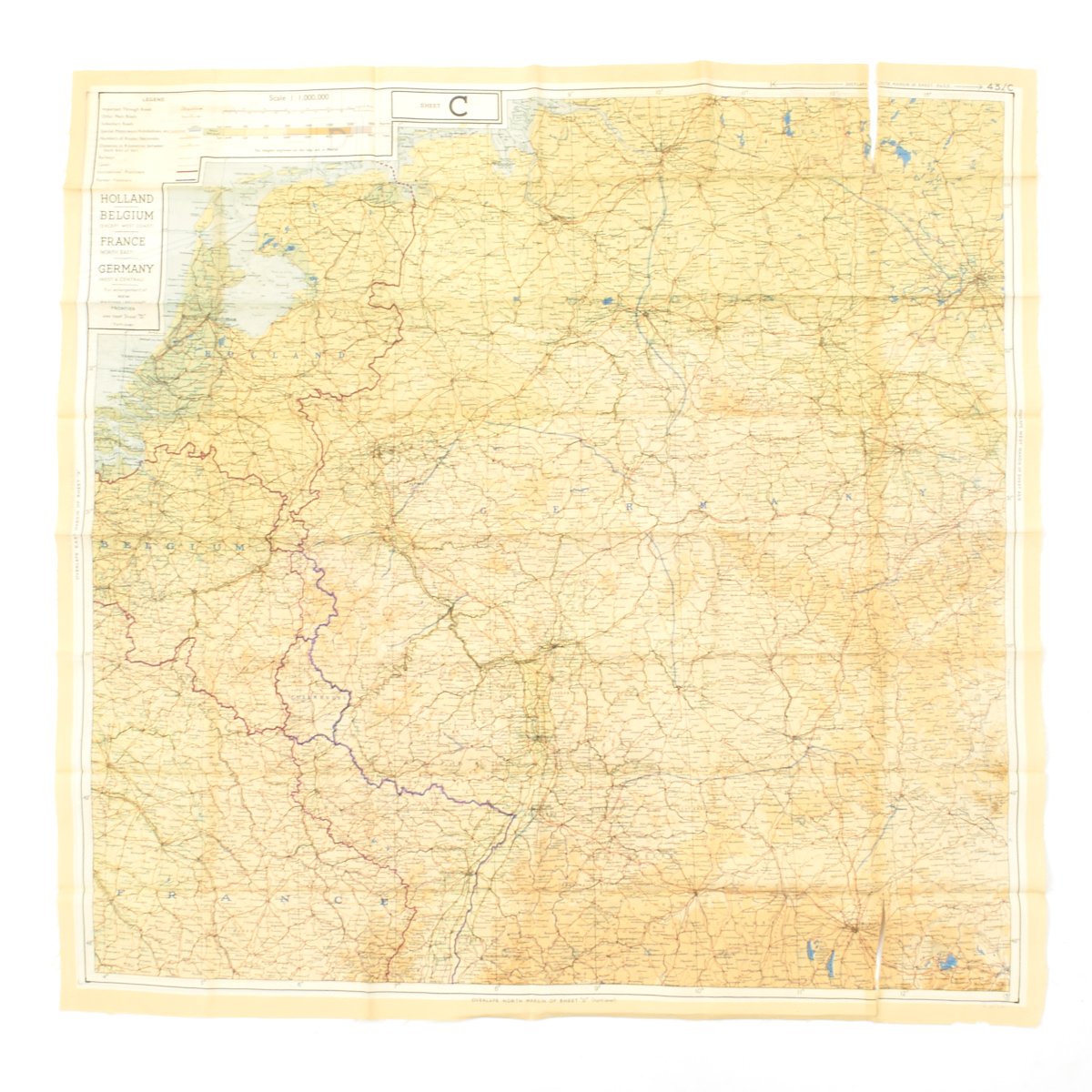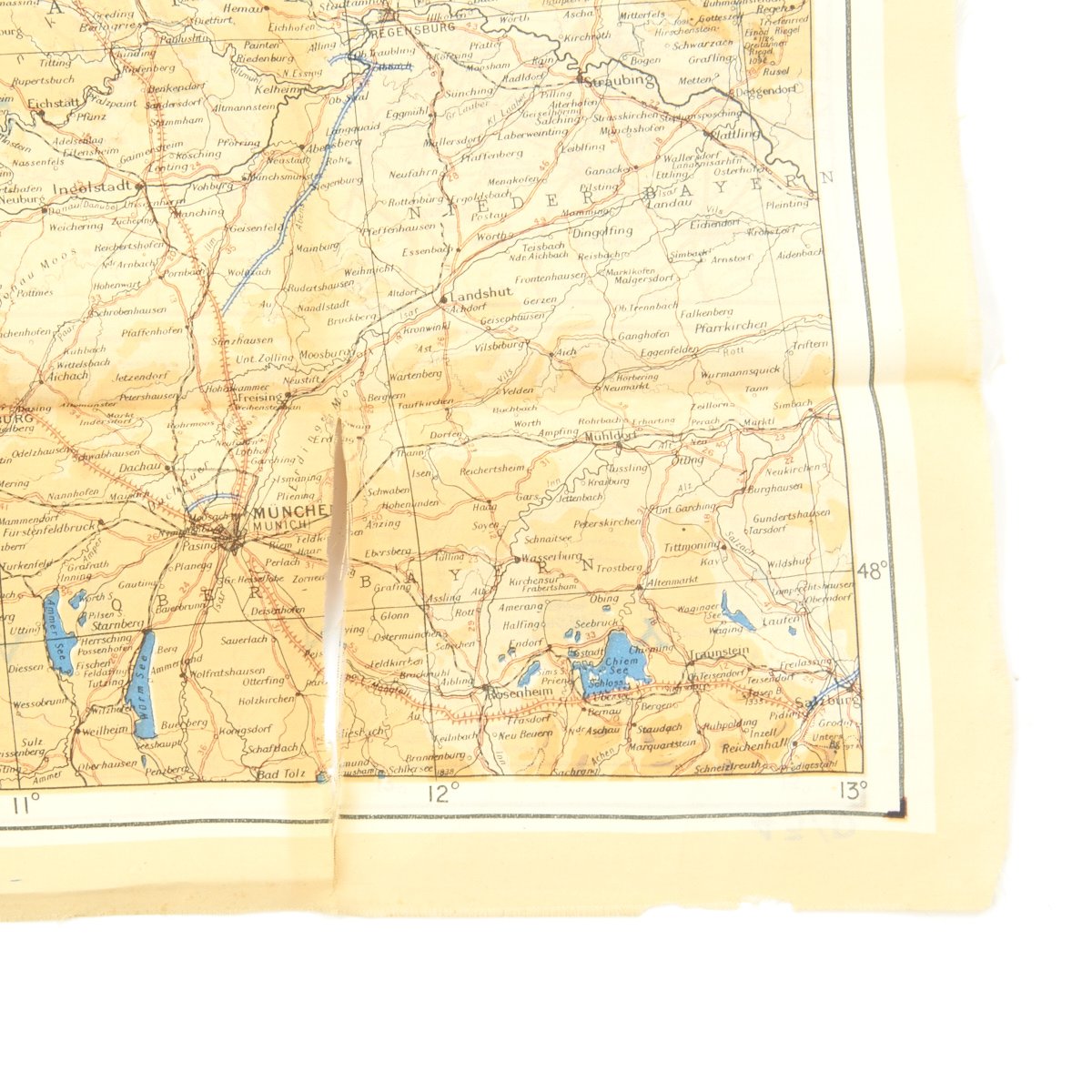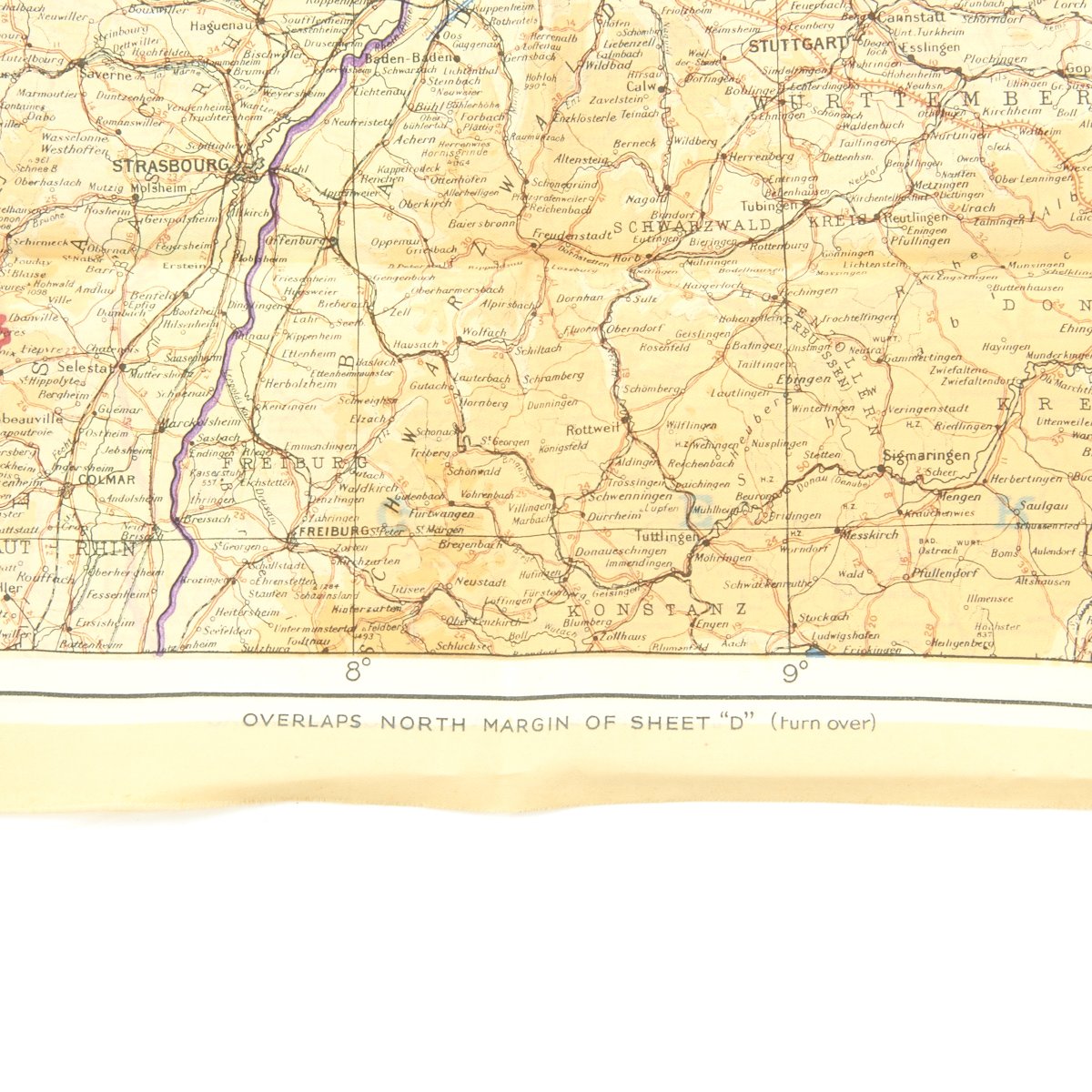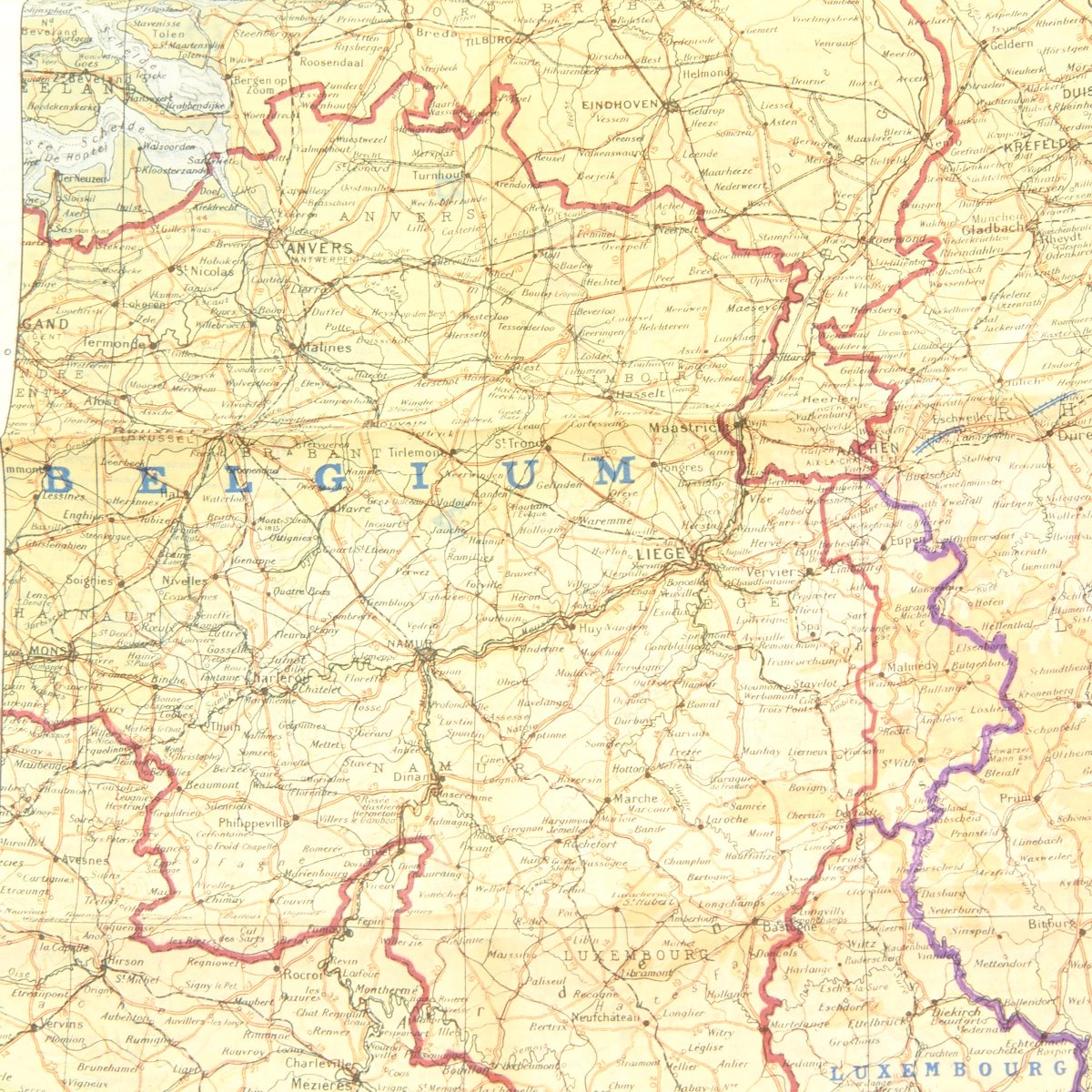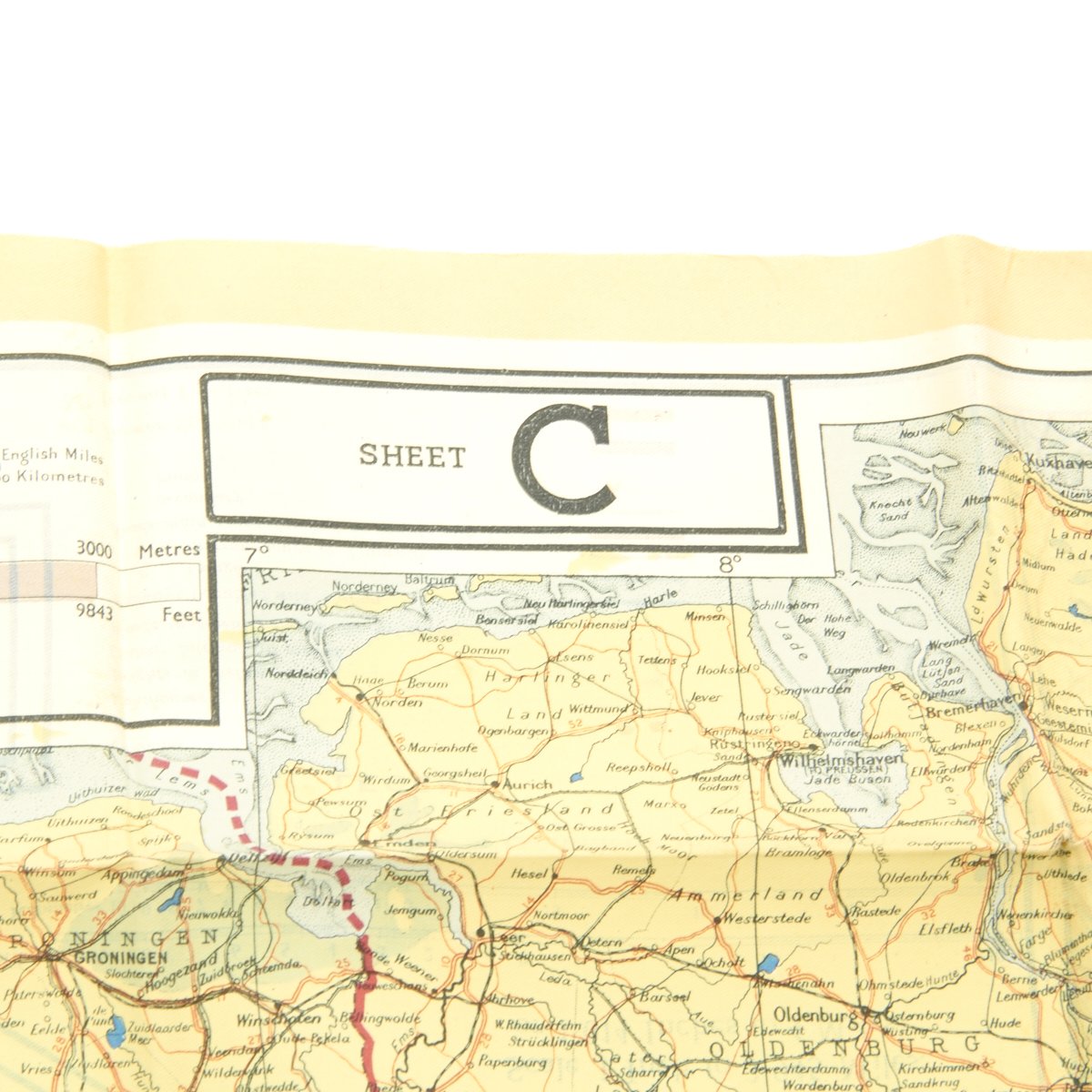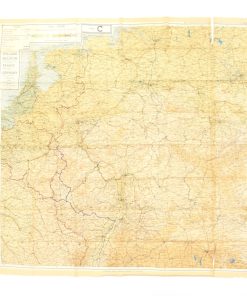Original British WWII Allied Forces 43-Series Invasion Map of Western Europe – Sheets 43/C and 43/D Original Items
$ 225,00 $ 90,00
Original Items: Only One Available. This is a nice British-Made Allied forces 43-series silk “invasion map”, from WWII, which is one of a series of maps, which could be spread out on a large table and interlocked. During WWII, maps needed to the constantly updated, as the frontier of the war changed over time. There are both “International Frontiers” as well as “Former Frontiers” color coded on the maps, as well as close ups of specific frontiers, such as the Belgian front.
Sheet 43 / C shows the following countries: HOLLAND, BELGIUM (EXCEPT WEST COAST), FRANCE (NORTH EAST), and GERMANY (WEST & CENTRAL).
Sheet 43 / D shows a closeup of the BELGIUM & GERMANY (NEW FRONTIER), as well as FRANCE (SOUTH EAST), GERMANY (SOUTH WEST), and SWITZERLAND (EXCEPT SOUTH EAST).
This example is in good condition, though it does have some tears along the fold lines, and fraying at the edges. It also has faded a bit due to age.
Ready to add to your collection and display!
More on the British 43-Series maps:
In 1943 another series of cloth escape maps were produced that are immediately recognized by their vivid colors. These maps are of the European Theater and were issued to Allied pilots of the US, RAF, and RCAF. Printed by the company of John Waddington, Ltd, the maps consist of eight colors and are primarily at a scale of 1:1,000,000 with larger scale inserts. There are ten sheets in this series, which are composites of various paper sheets of the then existing International Map of the World, unlike the previous escape maps which were exact copies of existing paper sheets. The sheets are numbered with the prefix 43 followed by one of the upper case letters: A, B, C, D, E, F, G, H, and K (east) and K (west). When all the maps are laid out they basically overlap to provide a complete map of Europe. The maps were usually printed on both sides, although single-side versions exist. Normally, the maps were printed sequentially–A on one side and B on the other side; C on one side and D on the other side–although that was not always the case. For example, maps with C on one side and E on the other side are also occasionally found.
An interesting feature of the maps is the black points on the map with corresponding distances between the points expressed in chilometers. For example, the distance would be marked indicating the distance between two large towns. This assisted the user in readily identifying distances without having to measure the distance with the scale legend printed elsewhere on the map.
Fast Shipping with Professional Packaging
Thanks to our longstanding association with UPS FedEx DHL, and other major international carriers, we are able to provide a range of shipping options. Our warehouse staff is expertly trained and will wrap your products according to our exact and precise specifications. Prior to shipping, your goods will be thoroughly examined and securely secured. We ship to thousands clients each day across multiple countries. This shows how we're dedicated to be the largest retailer on the internet. Warehouses and distribution centres can be located throughout Europe as well as the USA.
Note: Orders with more than one item will be assigned a processing date depending on the item.
Before shipping before shipping, we'll conduct a thorough inspection of the items you have ordered. Today, the majority of orders will be delivered within 48 hours. The delivery time will be between 3-7 days.
Returns
The stock is dynamic and we cannot completely manage it because multiple stakeholders are involved, including our factory and warehouse. So the actual stock may alter at any time. It's possible that you may not receive your order once the order has been made.
Our policy is valid for a period of 30 days. If you don't receive the product within 30 days, we are not able to issue a refund or an exchange.
You can only return an item if it is unused and in the same state as the day you received it. You must have the item in its original packaging.
Related products
Uncategorized
Angolan Rebel 1970s era 60mm Inert Display Mortar from Angolan Civil War Original Items
Uncategorized
Armored Burgonet Helmet & Polearm from Scottish Castle Leith Hall Circa 1700 Original Items
Uncategorized
Uncategorized
Uncategorized
Armoured Fighting Vehicles of the World: AFVs of World War One (Hardcover Book) New Made Items
Uncategorized
Uncategorized
Uncategorized
Uncategorized
Uncategorized
Uncategorized
Uncategorized
Uncategorized
Uncategorized
Uncategorized
Uncategorized
Uncategorized
Uncategorized
